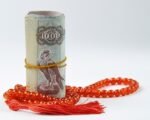Millions of Australians could be repaid hundreds of thousands of dollars by the big banks for junk insurance products, but there’s a catch. Following the findings of the Royal Commission into Misconduct in the Banking, Superannuation and Financial Services Industry, Australia’s largest banks have been ordered to pay $10 billion to customers who were sold worthless insurance products. These products, often bundled with loans, were sold under misleading circumstances, leaving many Australians unknowingly paying for unnecessary coverage. However, customers must actively apply for these refunds, adding a layer of complexity to the process.

The Royal Commission’s Findings
The Royal Commission’s investigation revealed widespread misconduct in the sale of insurance products by major banks. Customers were often pressured into purchasing loan protection and gap insurance, which provided little to no value. Bank employees received bonuses for selling these products, incentivizing the practice. Many Australians were unaware they had even purchased these policies, as the costs were often hidden within loan agreements. The Commission’s findings have led to a significant push for refunds, but the process is not automatic.
To receive a refund, customers must review their loan and insurance documents to identify any unnecessary charges. This can be a daunting task, as the fees are often buried in complex financial statements. Despite the challenges, the potential refunds are substantial, with some individuals receiving tens of thousands of dollars. The Commission’s report has highlighted the need for greater transparency in the banking industry and stricter regulations to protect consumers.
The Application Process
Applying for a refund requires customers to gather documentation and submit claims to their respective banks. This process can be time-consuming and requires careful attention to detail. Customers must provide evidence of the junk insurance products they were sold and demonstrate that these products were unnecessary. Banks have set up dedicated teams to handle these claims, but the volume of applications can lead to delays.
The Australian Securities and Investments Commission (ASIC) has provided guidelines to help customers navigate the refund process. These guidelines include checking loan agreements for hidden insurance fees and contacting banks directly to inquire about potential refunds. Customers are encouraged to be persistent and thorough in their applications, as the financial rewards can be significant. Some customers have reported receiving refunds within a few months, while others have faced longer wait times.
Impact on the Banking Industry
The requirement to repay billions of dollars has had a profound impact on Australia’s banking industry. Banks are now under increased scrutiny and must adhere to stricter regulations to prevent future misconduct. The Royal Commission’s findings have prompted a reevaluation of sales practices and a commitment to greater transparency. Banks are also investing in customer education to ensure that consumers are fully informed about the products they purchase.
The refunds have provided financial relief to many Australians, helping them to reduce debt and improve their financial stability. However, the process has also exposed the complexities of the banking system and the challenges consumers face in seeking redress. The banking industry is now focused on rebuilding trust with customers and demonstrating a commitment to ethical practices. This includes ongoing efforts to identify and refund any remaining junk insurance products.








